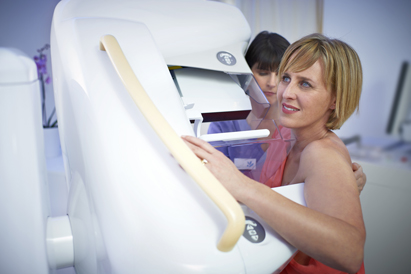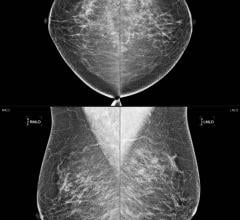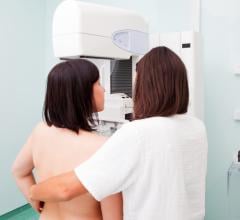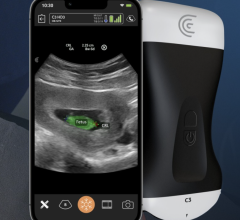
August 26, 2013 — Based on data from a multi-site imaging trial involving more than 2,600 women, researchers say breast lesions categorized as ‘probably benign’ on supplemental screening ultrasound could be re-evaluated with imaging in 12 months, reducing patient anxiety, follow-up exams and unnecessary biopsies. Results of the study are published online in the journal Radiology.
In the study, a team of researchers analyzed data from the American College of Radiology Imaging Network (ACRIN) trial 6666, in which both annual mammography and ultrasound screenings were performed on women with dense breasts at 21 sites around the country. Ultrasound is increasingly being used as a supplement to screening mammography because it is able to detect breast cancers that may not be visible with mammography, especially in dense breasts.
“Supplemental ultrasound screening increases cancer detection beyond mammography alone, but may also result in an increased number of additional tests,” said lead researcher Richard G. Barr, M.D., Ph.D., professor of radiology at the Northeast Ohio Medical University in Youngstown, Ohio. “Both screening ultrasound and screening mammography have similar issues: to find breast cancers, a large number of biopsies must be performed, most of which turn out to be negative.”
Barr and colleagues analyzed the trial’s ultrasound-detected lesions assessed as probably benign or category 3 of the Breast Imaging-Reporting and Data System (BI-RADS), a standardized system of assessing breast lesions and their probability of malignancy based on appearance, to determine the prevalence and malignancy rate of these lesions.
Guidelines suggest that BI-RADS 3 lesions should be monitored for suspicious changes with additional imaging at intervals of six, 12 and 24 months.
“BI-RADS 3 lesions are common on screening ultrasound and often lead to unnecessary biopsies and additional imaging, causing substantial cost and anxiety for patients,” Barr said. “We wanted to study these BI-RADS 3 lesions to look for ways to perform fewer biopsies without missing breast cancers.”
The researchers analyzed the screening ultrasound exams and follow-up data of 2,662 trial participants recruited between 2004 and 2006. Of the 2,662 women, 519 had a total of 745 BI-RADS 3 lesions, representing 25 percent of all ultrasound-detected lesions in the study.
Of the 745 BI-RADS 3 lesions, six were malignant for a total malignancy rate of 0.8 percent. The average size of the detected cancers among the BI-RADS 3 lesions was 10 millimeters.
During six-month follow-up imaging, suspicious changes were observed in only one of the 745 BI-RADS 3 lesions. At 12-month follow-up imaging, suspicious changes were observed in a second BI-RADS 3 lesion, revealing an invasive breast cancer that had not yet spread beyond the breast.
“As a result of the low malignancy rate of BI-RADS 3 lesions and the low rate of suspicious changes at six-month follow-up imaging, yearly follow-up for these lesions may be appropriate,” Barr said. “The cancers detected due to changes at one year had not spread beyond the breast, with similar prognosis if the lesion was biopsied on initial detection.”
Barr said extending the follow-up imaging interval from six to 12 months for BI-RADS 3 lesions detected by screening ultrasound would substantially decrease the number of follow-up examinations and biopsies performed.
The researchers also found that women in the study with BI-RADS 3 lesions were more likely to be younger than 50 years of age, of Hispanic or Latino ethnicity and pre-menopausal.
Barr is currently conducting additional studies on ultrasound screening and research on the use of elastography, an advanced technique that helps distinguish benign from cancerous lesions.
For more information: www.radiologyinfo.org.


 July 29, 2024
July 29, 2024 








